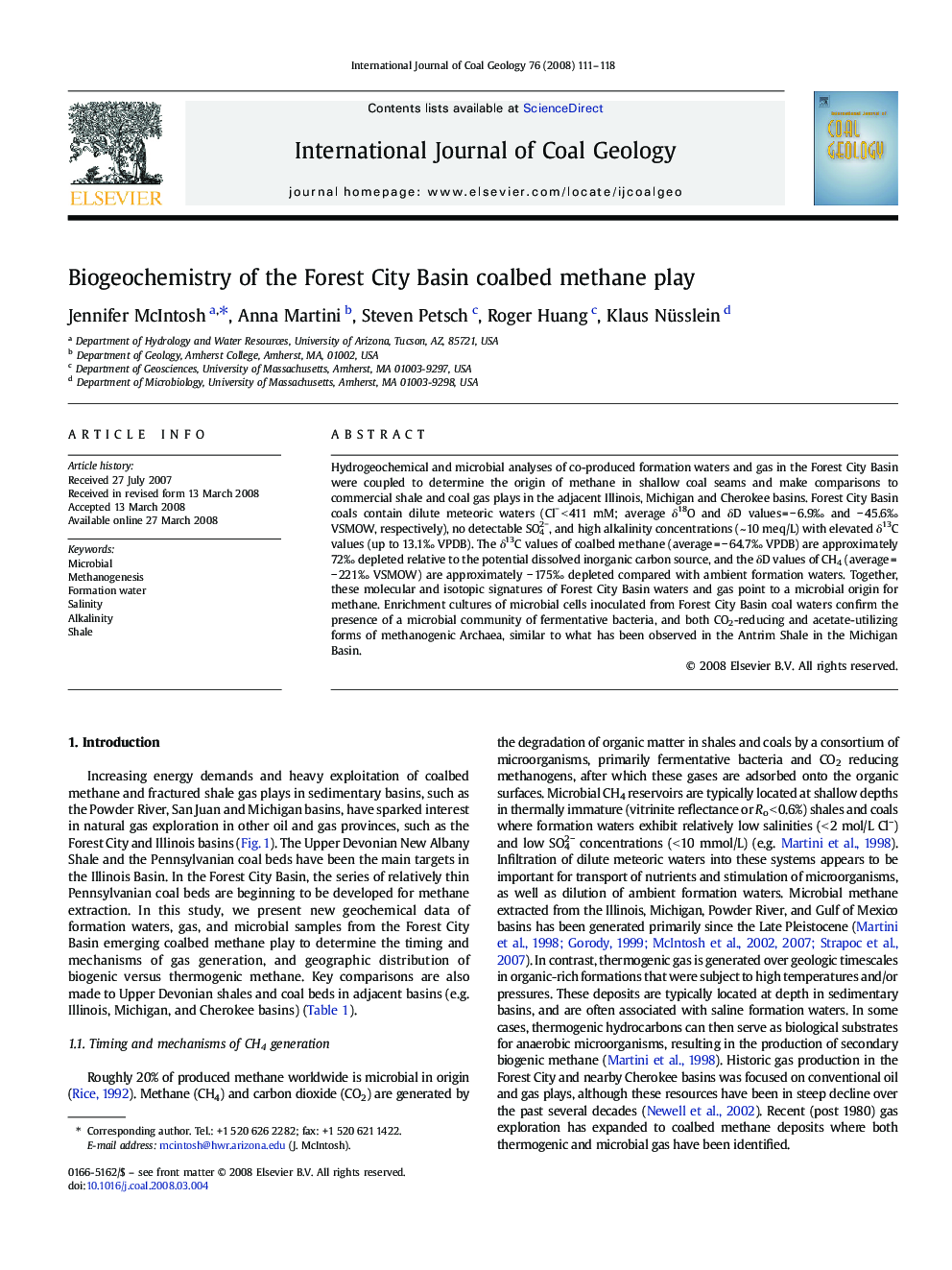| Article ID | Journal | Published Year | Pages | File Type |
|---|---|---|---|---|
| 1754044 | International Journal of Coal Geology | 2008 | 8 Pages |
Hydrogeochemical and microbial analyses of co-produced formation waters and gas in the Forest City Basin were coupled to determine the origin of methane in shallow coal seams and make comparisons to commercial shale and coal gas plays in the adjacent Illinois, Michigan and Cherokee basins. Forest City Basin coals contain dilute meteoric waters (Cl− < 411 mM; average δ18O and δD values = − 6.9‰ and − 45.6‰ VSMOW, respectively), no detectable SO42−, and high alkalinity concentrations (~ 10 meq/L) with elevated δ13C values (up to 13.1‰ VPDB). The δ13C values of coalbed methane (average = − 64.7‰ VPDB) are approximately 72‰ depleted relative to the potential dissolved inorganic carbon source, and the δD values of CH4 (average = − 221‰ VSMOW) are approximately − 175‰ depleted compared with ambient formation waters. Together, these molecular and isotopic signatures of Forest City Basin waters and gas point to a microbial origin for methane. Enrichment cultures of microbial cells inoculated from Forest City Basin coal waters confirm the presence of a microbial community of fermentative bacteria, and both CO2-reducing and acetate-utilizing forms of methanogenic Archaea, similar to what has been observed in the Antrim Shale in the Michigan Basin.
